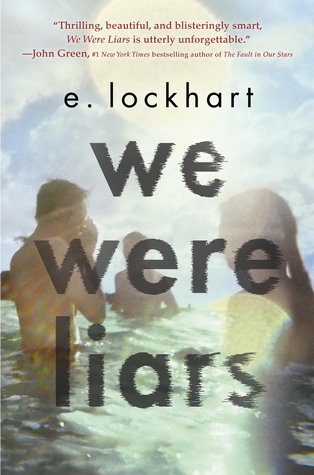Lockart, E. (2014). We were liars. New York, NY: Delacorte.
Summary: Cadence Sinclair is the oldest grandchild of a very rich and privileged family who spends their summers on their own private island. Despite their seemingly perfect exteriors, a lot of trouble is under the surface. Cadence falls in love with Gat, a friend of her cousin Johnny. Each summer they spend together. One day when she is fifteen, she wakes us nearly naked on the beach with a severe head injury. This novel shares her narration from that summer and a summer two years later.
Review: An intense novel that has you gripping the book at the end where everything you believed is suddenly turned on its head.
Diversity: Despite being about a privileged, rich white family, this book is about race and how race acts as a threat.
Diversity: Despite being about a privileged, rich white family, this book is about race and how race acts as a threat.
Suggestions for Teachers: Great to have in a high school classroom library. Would be perfect for a unit on power and privilege. It could easily be used as a selection for literature circles.
Reading Level:
- Quantitative: Lexile 600L, ATOS Book Level 9.67-12.01, Flesh-Kincaid 8.32-12.12, 8.41-10.81RMM
- Qualitative: This text is moderately complex; there are a lot of flashbacks and it takes a sophisticated reader to understand the ending and the effects of an unreliable narrator. The language is largely contemporary and familiar but also very lyrical. Those who have knowledge of depression and Sylvia Plath will have a stronger understanding but this is a great text to introduce Plath as well.
Common Core State Standards:
CCSS.ELA-LITERACY.RL.9-10.2
Determine a theme or central idea of a text and analyze in detail its development over the course of the text, including how it emerges and is shaped and refined by specific details; provide an objective summary of the text.
Determine a theme or central idea of a text and analyze in detail its development over the course of the text, including how it emerges and is shaped and refined by specific details; provide an objective summary of the text.
CCSS.ELA-LITERACY.RL.9-10.3
Analyze how complex characters (e.g., those with multiple or conflicting motivations) develop over the course of a text, interact with other characters, and advance the plot or develop the theme.
Analyze how complex characters (e.g., those with multiple or conflicting motivations) develop over the course of a text, interact with other characters, and advance the plot or develop the theme.
CCSS.ELA-LITERACY.RL.9-10.5
Analyze how an author's choices concerning how to structure a text, order events within it (e.g., parallel plots), and manipulate time (e.g., pacing, flashbacks) create such effects as mystery, tension, or surprise.
Analyze how an author's choices concerning how to structure a text, order events within it (e.g., parallel plots), and manipulate time (e.g., pacing, flashbacks) create such effects as mystery, tension, or surprise.
CCSS.ELA-LITERACY.RL.9-10.7
Analyze the representation of a subject or a key scene in two different artistic mediums, including what is emphasized or absent in each treatment (e.g., Auden's "Musée des Beaux Arts" and Breughel's Landscape with the Fall of Icarus).
Analyze the representation of a subject or a key scene in two different artistic mediums, including what is emphasized or absent in each treatment (e.g., Auden's "Musée des Beaux Arts" and Breughel's Landscape with the Fall of Icarus).
Awards: N/A
Series Information: N/A
Series Information: N/A

No comments:
Post a Comment